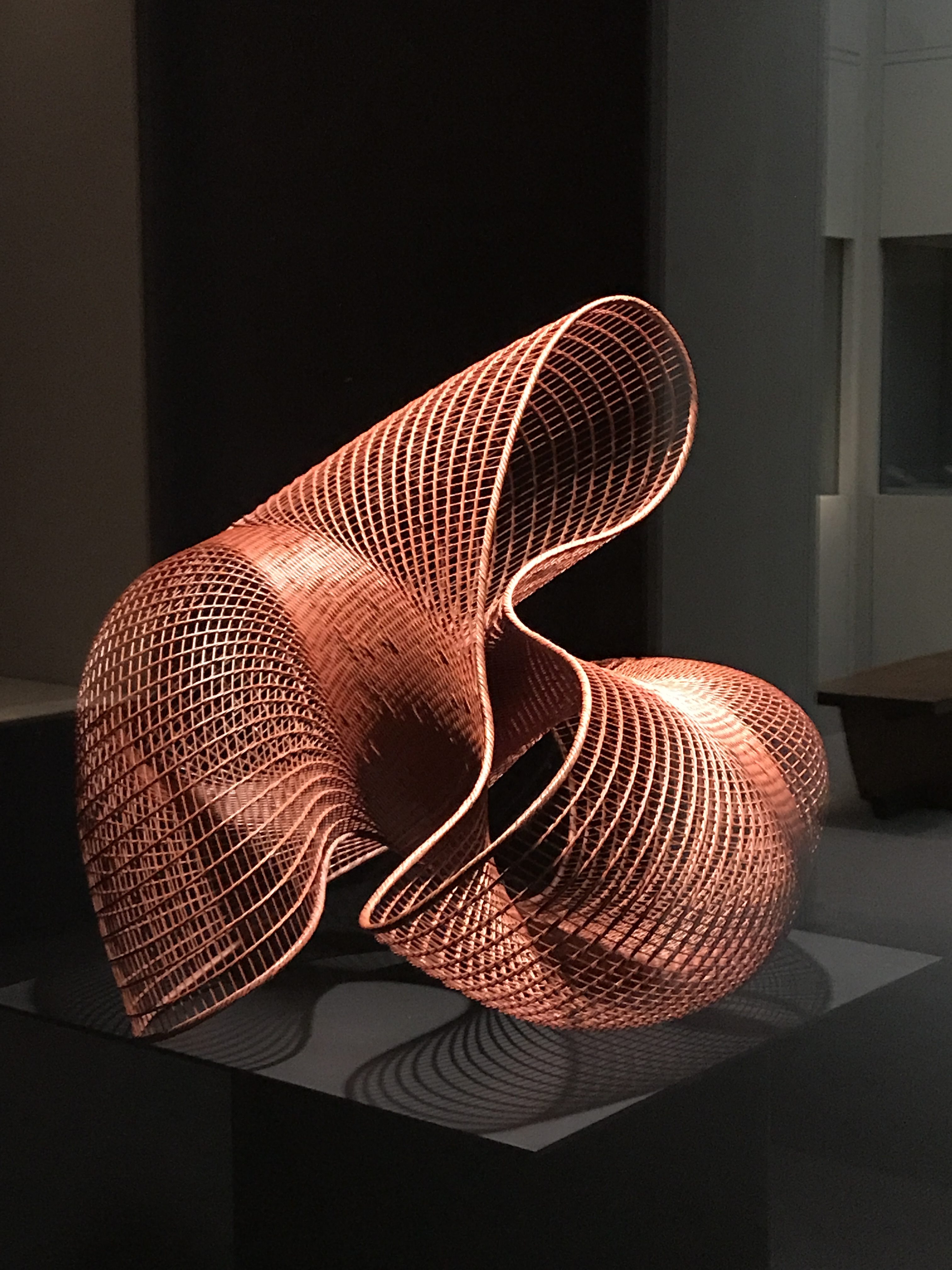
 South Florida is not known for its cultural offerings. What a treat it was to come across the Morikami Museum and the lovely Japanese gardens that surround it. The Museum is currently showing an exhibition of kimonos, block prints and also offers a fascinating permanent exhibition detailing the history of the Yamato Colony, a Japanese farming community that settled in South Florida 100 years ago.
South Florida is not known for its cultural offerings. What a treat it was to come across the Morikami Museum and the lovely Japanese gardens that surround it. The Museum is currently showing an exhibition of kimonos, block prints and also offers a fascinating permanent exhibition detailing the history of the Yamato Colony, a Japanese farming community that settled in South Florida 100 years ago.
The 200 acres of gardens reflect major periods of Japanese garden design, from the eighth to the 20th century, and consist of shinden islands, a paradise garden and a contemporary garden, pebbled paths, resting areas, lakes teeming with koi and other wildlife, pine forests, bamboo groves and an extraordinary tropical bonsai collection. Garden designer Hoichi Kurisu, wished that “each garden is intended to express the character and ideas of a unique counterpart in Japan without attempting to duplicate those gardens, and seamlessly flow together as one garden.” If you find yourself in Palm Beach County, enjoy a morning strolling through this peaceful world.
 Honda Shoryu, Timber bamboo and rattan, 2000[/caption]
There is a period missing in the timeline of human development, that of the Bamboo Age. Bamboo's widespread use since earliest times - particularly in East and Southeast Asia - elevates this extraordinary plant to almost mythic status. It has been used as transport (wheeled vehicles), building material, food, weapon, musical instrument and, even, poison. For hundreds of years, simple, everyday utensils as well as refined bamboo vessels were made according to local traditions and techniques passed down from generation to generation. Most ubiquitous of all, perhaps, is the basket.
It was not until the end of the 19th century that bamboo craftsmanship began to be recognized as one of the traditional Japanese decorative arts, and, later, as an art form. As with other handmade arts in Japan, there were lineages of craftsmen who handed down techniques and developed their personal styles; Masters emerged, recognized as National Living Treasures. Six of these artists are represented in this stunning show of 90 baskets collected by Diane and Arthur Abbey since the 1990s. The show comes to a close soon at the Met Museum.
[gallery columns="2" size="full" ids="8396,8397"]
FYI: The 64th Japan Traditional Kogei - Art Crafts - Exhibition will take place at the Hiroshima Prefectural Art Museum between February 23 and March 11, 2018
"
["post_title"]=>
string(27) "Bountiful, Beautiful Bamboo"
["post_excerpt"]=>
string(0) ""
["post_status"]=>
string(7) "publish"
["comment_status"]=>
string(4) "open"
["ping_status"]=>
string(4) "open"
["post_password"]=>
string(0) ""
["post_name"]=>
string(26) "bountiful-beautiful-bamboo"
["to_ping"]=>
string(0) ""
["pinged"]=>
string(0) ""
["post_modified"]=>
string(19) "2017-09-14 10:20:27"
["post_modified_gmt"]=>
string(19) "2017-09-14 14:20:27"
["post_content_filtered"]=>
string(0) ""
["post_parent"]=>
int(0)
["guid"]=>
string(31) "http://lisalindblad.com/?p=8394"
["menu_order"]=>
int(0)
["post_type"]=>
string(4) "post"
["post_mime_type"]=>
string(0) ""
["comment_count"]=>
string(1) "0"
["filter"]=>
string(3) "raw"
}
}
Honda Shoryu, Timber bamboo and rattan, 2000[/caption]
There is a period missing in the timeline of human development, that of the Bamboo Age. Bamboo's widespread use since earliest times - particularly in East and Southeast Asia - elevates this extraordinary plant to almost mythic status. It has been used as transport (wheeled vehicles), building material, food, weapon, musical instrument and, even, poison. For hundreds of years, simple, everyday utensils as well as refined bamboo vessels were made according to local traditions and techniques passed down from generation to generation. Most ubiquitous of all, perhaps, is the basket.
It was not until the end of the 19th century that bamboo craftsmanship began to be recognized as one of the traditional Japanese decorative arts, and, later, as an art form. As with other handmade arts in Japan, there were lineages of craftsmen who handed down techniques and developed their personal styles; Masters emerged, recognized as National Living Treasures. Six of these artists are represented in this stunning show of 90 baskets collected by Diane and Arthur Abbey since the 1990s. The show comes to a close soon at the Met Museum.
[gallery columns="2" size="full" ids="8396,8397"]
FYI: The 64th Japan Traditional Kogei - Art Crafts - Exhibition will take place at the Hiroshima Prefectural Art Museum between February 23 and March 11, 2018
"
["post_title"]=>
string(27) "Bountiful, Beautiful Bamboo"
["post_excerpt"]=>
string(0) ""
["post_status"]=>
string(7) "publish"
["comment_status"]=>
string(4) "open"
["ping_status"]=>
string(4) "open"
["post_password"]=>
string(0) ""
["post_name"]=>
string(26) "bountiful-beautiful-bamboo"
["to_ping"]=>
string(0) ""
["pinged"]=>
string(0) ""
["post_modified"]=>
string(19) "2017-09-14 10:20:27"
["post_modified_gmt"]=>
string(19) "2017-09-14 14:20:27"
["post_content_filtered"]=>
string(0) ""
["post_parent"]=>
int(0)
["guid"]=>
string(31) "http://lisalindblad.com/?p=8394"
["menu_order"]=>
int(0)
["post_type"]=>
string(4) "post"
["post_mime_type"]=>
string(0) ""
["comment_count"]=>
string(1) "0"
["filter"]=>
string(3) "raw"
}
}